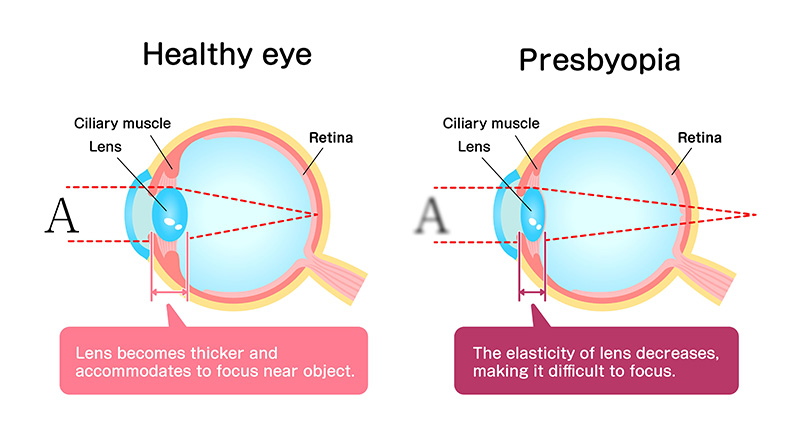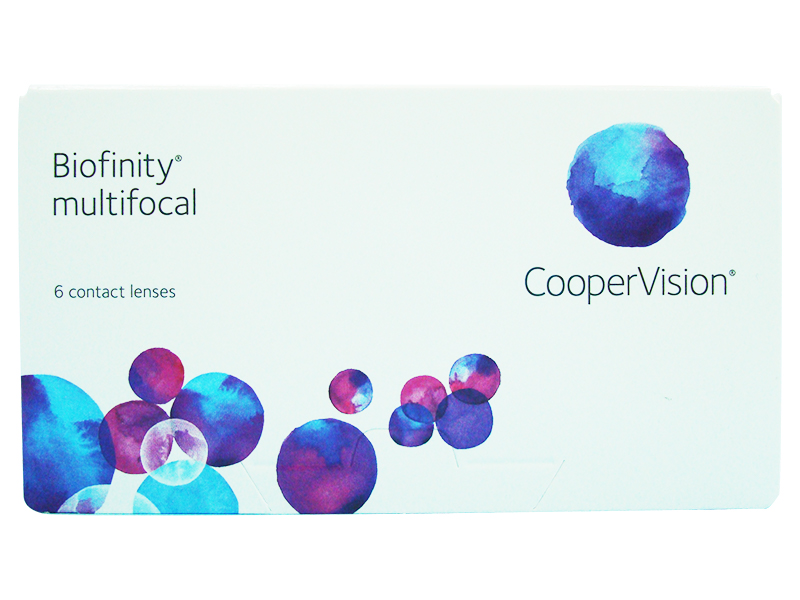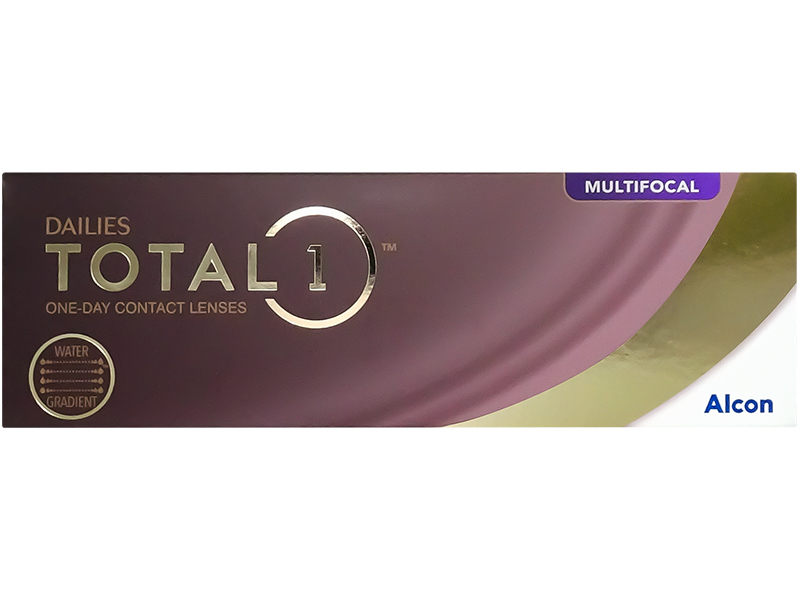Ageing Eye Problem? Understanding Presbyopia and Multifocal Contact Lenses

Have you ever found yourself squinting at a newspaper, struggling to decipher the blurry text? Or perhaps you've experienced the frustration of trying to read a menu in a dimly lit restaurant, desperately shifting it closer to the light in hopes of clarity.
You're not alone. Many people over 40 have experienced the same thing!
Individual experiences may vary, but once you're in your 40s, you may start to encounter presbyopia, a common age-related vision problem. As you age, not only do you contend with wrinkles, age spots, greying hair and change of life, but you may also experience changes in your eyesight. Regardless of preference, ageing problems are issues that we must confront, aren't they?
Talking about age-related eye issues, as we age, various eye problems may arise, with presbyopia being a symptom experienced by everyone to some degree, although the severity may vary. However, there's no need to worry.
In today's world, there are many convenient options available to address presbyopia, including multifocal contact lenses. In this blog, we'll delve into the topic of presbyopia and explore the benefits of contact lenses designed specifically to address this issue.
Summary
- Understanding Presbyopia: What You Need to Know
- What is Presbyopia?
- What to Do When You Develop Presbyopia?
- Understanding Multifocal Contact Lenses: What You Need to Know
- What are Multifocal Contact Lenses?
- What is ADD?
- Pros & Cons of Multifocal Contact Lenses
- Our Most Popular Multifocal Contact Lenses
Understanding Presbyopia: What You Need to Know
What is Presbyopia?

Presbyopia typically begins around the age of 40 and progresses with age. However, the rate and severity of progression vary from person to person.
Our eyes adjust focus by using the muscles (ciliary muscles) around the lens, which functions similarly to a camera lens, to change the thickness of the lens, making it thicker or thinner.
Presbyopia occurs when the elasticity of this lens and the strength of the ciliary muscles decrease with age, resulting in the inability to properly focus, making nearby objects appear blurry.
When experiencing symptoms of presbyopia, nearby objects may appear blurry when viewed up close, leading to the need to strain the eyes or hold objects farther away to see them clearly. Additionally, reading small print in dimly lit areas may become more difficult, and symptoms such as eye strain, headaches, and shoulder tension may also occur.
While presbyopia affects nearly everyone as they age, it can be managed with appropriate eyeglasses or contact lenses.
What to Do When You Develop Presbyopia?

When you start experiencing symptoms of presbyopia, it's important to consult an eye doctor to determine the correct prescription. If you regularly wear contact lenses, you probably already undergo regular eye exams by an eye doctor. As you reach the age when presbyopia becomes more common, your eye doctor will also check for this condition during your examinations.
When it comes to correcting presbyopia, wearing multifocal contact lenses after consulting an eye doctor can be very convenient.
Many people use reading glasses only when reading newspapers or using a PC or smartphone. However, in everyday life, such as during sports or events, it can be cumbersome to constantly put on reading glasses to see near or far objects. For reasons of convenience and beauty consciousness, such as wanting to enjoy makeup or fashion without glasses, many people opt to use multifocal contact lenses.
Understanding Multifocal Contact Lenses: What You Need to Know
What are Multifocal Contact Lenses?
Multifocal Contact Lens is the one lens that contains the power to see both near and far. It is a contact lens that can correct farsightedness and nearsightedness with one lens. It can improve the difficulty of seeing nearby objects due to presbyopia.

What is ADD?
The [ADD] number is required when ordering multifocal contact lenses for presbyopia. The figure determines the amount of correction you need to be able to see clearly at a close distance. The Addition figure is a positive number between +0.50 and +3.00, which some contact lens brands refer to as a high, medium or low.
Find out more about Multifocal Contact Lenses.
Pros & Cons of Multifocal Contact Lenses
Pros:- Convenient as there's no need to constantly put on and take off reading glasses.
- Particularly useful for activities like sports and driving, where both near and distant vision are required.
- From an aesthetic perspective, multifocal contact lenses are often preferred over reading glasses.
- Takes some time for the contact lenses to adjust.
- Distant vision may be slightly impaired in darker environments compared to well-lit ones.
- Provides moderate clarity for both near and distant vision, but not as sharp as with dedicated glasses.
Our Popular Multifocal Contact Lenses
Biofinity Multifocal (Monthly Contact Lenses)

| Product | Biofinity Multifocal |
| Type | Monthly Multifocal (for presbyopia) |
| Packaging | 6 lenses per box |
| Base Curve | 8.6 mm |
| Diameter | 14.0 mm |
| Content | 52% Comfilcon A (Silicone hydrogel) & 48% water |
| Dk/L | 142 |
| Base Price | NZ$109.90 |
With silicone hydrogel and CooperVision's cutting-edge technology, these contact lenses offer supreme comfort and crystal-clear vision at every distance, while maintaining optimal oxygen flow to your eyes.
Customer reviews
Dailies Total 1 Multifocal (Daily Contact Lenses)

| Product | Dailies Total 1 Multifocal |
| Type | Daily Multifocal (for presbyopia) |
| Packaging | 30 lenses per box |
| Base Curve | 8.5 mm |
| Diameter | 14.1 mm |
| Content | 67% Delefilcon A (Silicone hydrogel) & 33% water |
| Dk/L | 156 |
| Base Price | NZ$79.90 |
Employing Alcon's exclusive prescription distribution design, these contact lenses ensure clear and precise vision from close-up to far distances, delivering comprehensive coverage. They boast up to 6 times more breathability than regular lenses, facilitating proper airflow and sustaining optimal eye health.
Customer reviews
Discover Our Full Range of Multifocal Contact Lenses

As we age, encountering various age-related issues is inevitable, and sometimes, we may feel burdened or inconvenienced by them. However, thanks to the latest technology, we can now live comfortably without being hindered by these problems.
Embrace these benefits and continue to enjoy active days with a clear vision!
